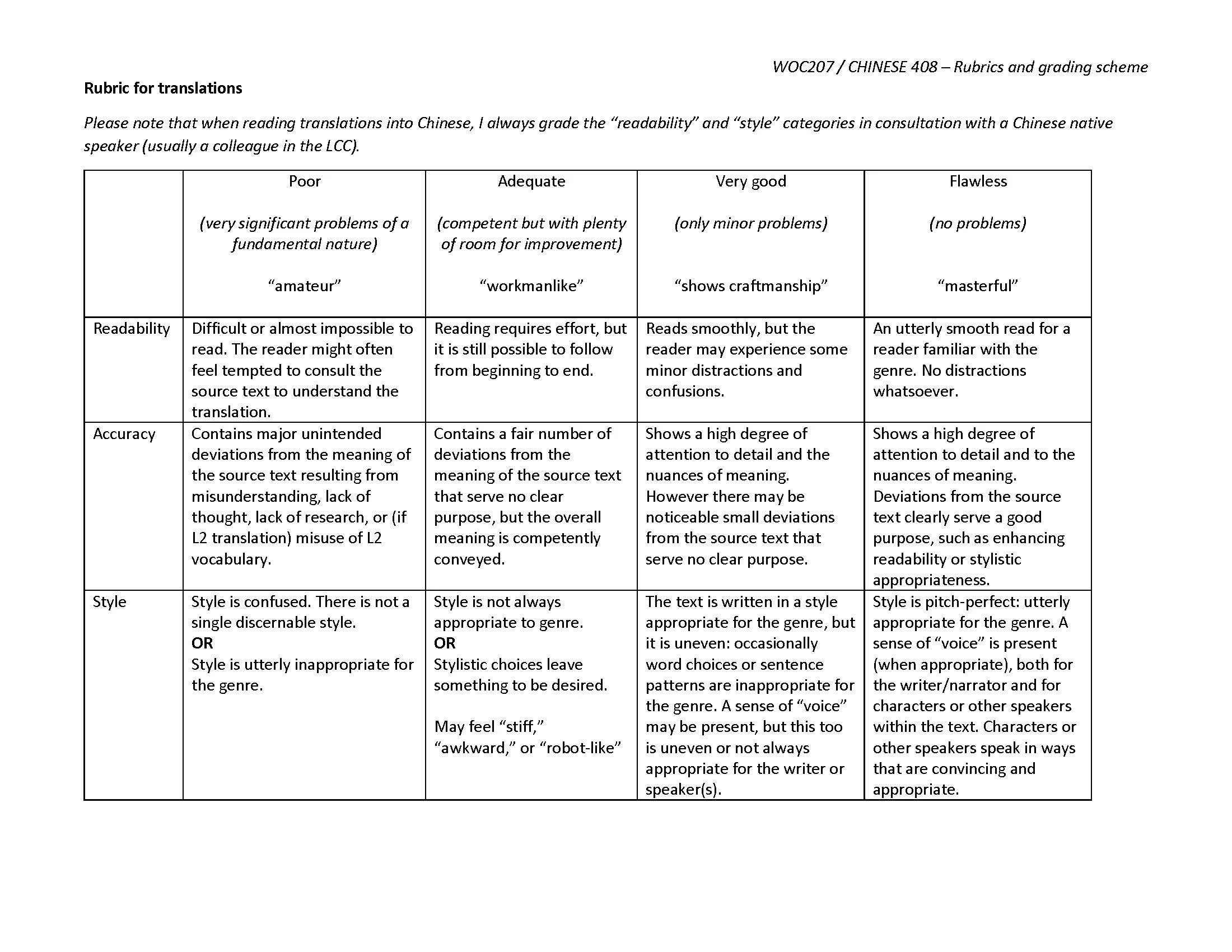Day 5
Tues. Nov. 8
Discussion of museum placard translation
Discussion of Ch-Eng translation (journalism)
Homework:
➤ Read Challenge 2 Option B translation
Please read the Chinese translation of the Washington Post article “A Mother’s Charge.” As you read, ask yourself these questions and come to class prepared to share/give thoughts on the following.
1) What is the function of this text? (What is its purpose—what is it trying to do?)
2) Does the translation also perform this function?
3) How readable is the translation? If there are places that are hard to understand, distracting, or require effort to read, why is that? (If there are any problems with readability, be ready to share one example of a place where readability is an issue.)
4) Does the style fit the genre? (i.e. does this read like a piece of journalistic writing to be published on a 公众号?) Be ready to share an example of one sentence where the style particularly fits the genre, and (if there are any) an example of a place where the style does not fit the genre.
➤ Be ready to talk about classmates’ translations of “Ad”
We’ll talk about this next class! Don’t forget to come ready to share you answers to these questions:
Which translation do you think does the best job using advertising language for a satirical effect? Could you give us an example of particular phrases that sound like advertising language or “want ad” language?
Which translation strikes you as most successful as a poem in Chinese?
➤ (For some of you) get started on your translator’s note
Your translator’s note is due 48 hours after we discuss your translation. (So Jiyuan and Zhihang, yours is due this Thursday.) Translator’s notes should be completed individually — each of you write your own. To submit your note, just send me it to me directly by email or WeChat.
Here is the prompt:
In a brief essay, describe the challenges posed by the text you translated, and explain the strategies you employed to meet those challenges. Keep it within 600 words. EAP-track students should write in English; CSL-track students should write in Chinese (using 1000字 as the word limit).
A successful translator’s note will:
Be written in clear and effective prose
Explore a single idea or insight in depth (rather than scattering your attention across many separate ideas)
Explain your ideas clearly and vividly using specific examples (rather than communicating just in vague abstract generalizations)
Focus on describing what you see in the text – help me “see it through your eyes” (rather than just narrating the process of translating, i.e. “first we did this, then we did this, then we did this…”)
Show me you’re using some of the concepts we’re exploring in this class to think about your translation work; or show me some other interesting insight that doing this translation assignment has given you.
Think of this as a way to document your thought process as a translator, both for me and for yourself. Please respect the word limit (this is different from my rules in other classes regarding word limits). Your style can be formal or colloquial, serious or playful—it’s up to you, as long as you have something of substance to say.
For a couple real-world examples of translator’s notes, you could read this 1000-word essay and this 400-word essay, both of which are translator’s notes that I wrote to accompany translations I published of poetry by Ouyang Jianghe. However, the goals of these are a little different than yours, so trust your own instincts about what to write in your own translator’s note.
➤ Consult the rubrics and grading scheme
This document shows how I handle graded work in this class and how it tallies up to the final grade.
(Please note that I don’t grade by generating numerical averages—what matters is really just how many “very goods” you get over the course of the three challenges. Don’t worry, these charts may look intimidating, but this grading scheme is actually pretty forgiving!)

